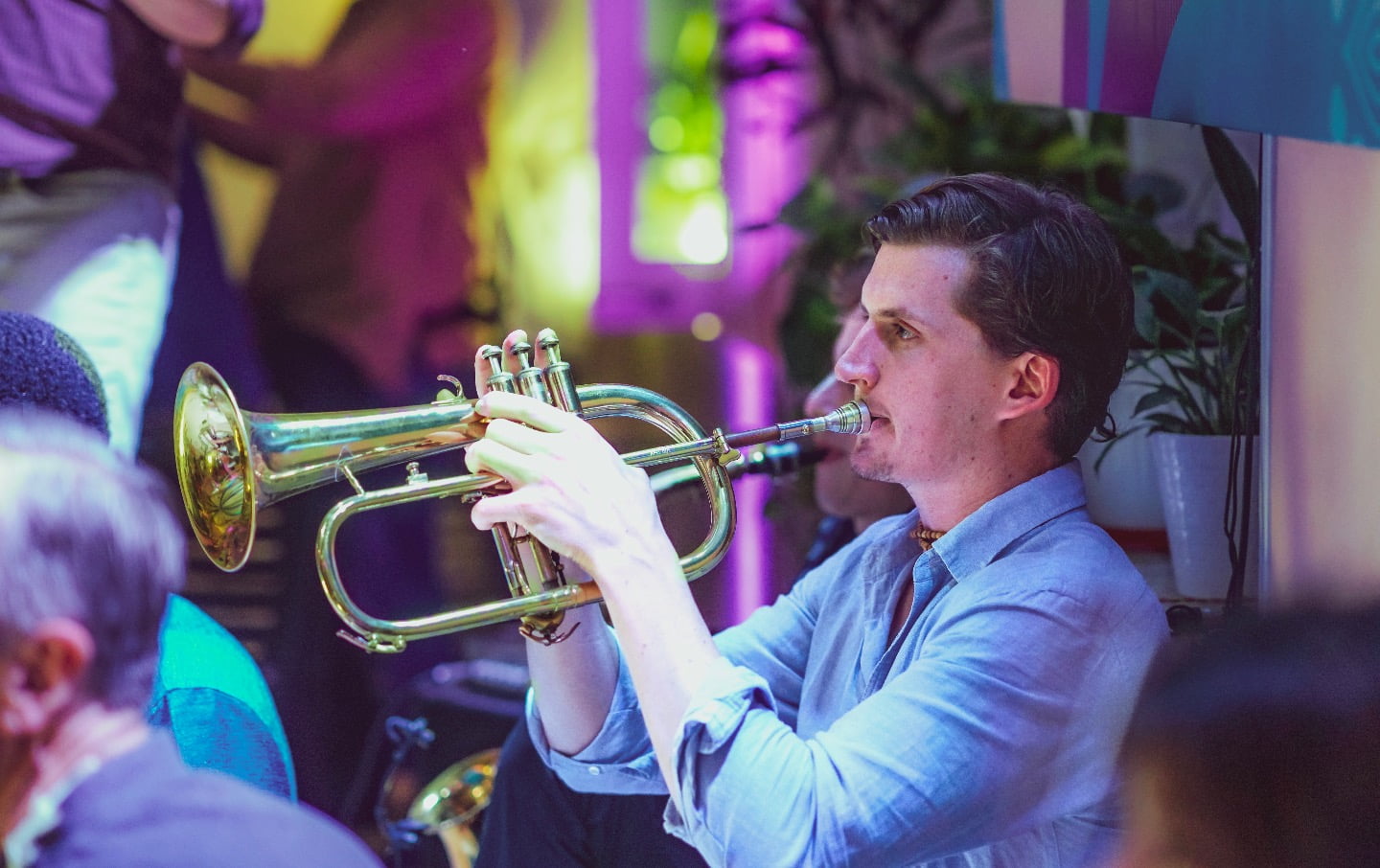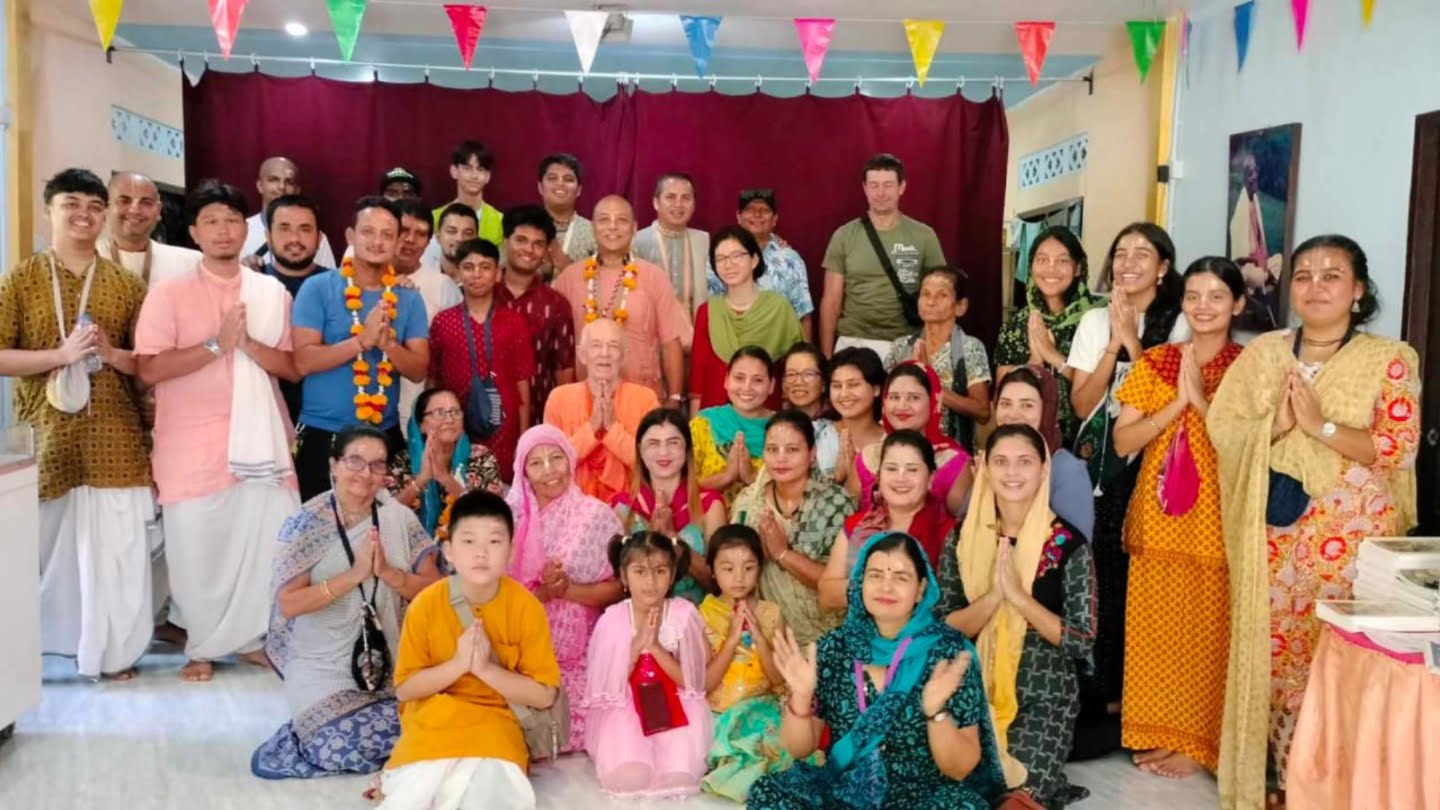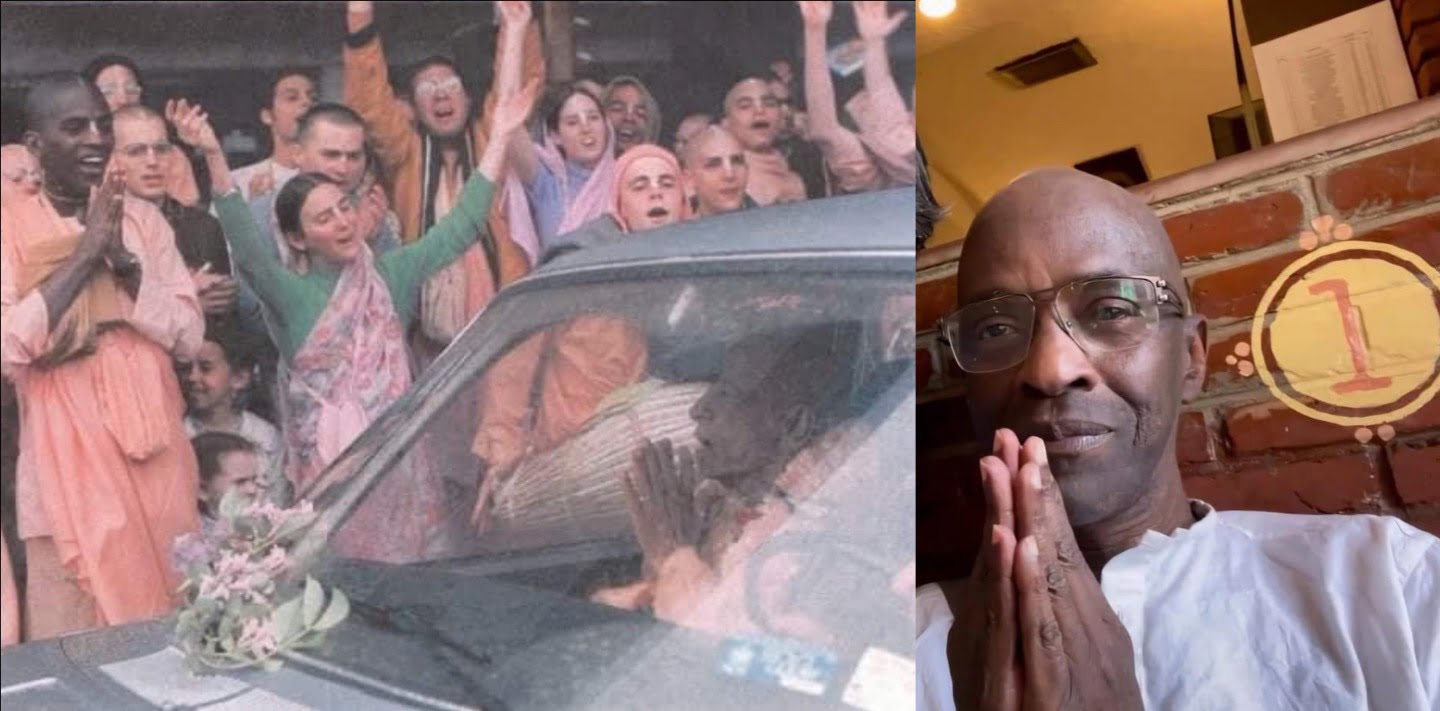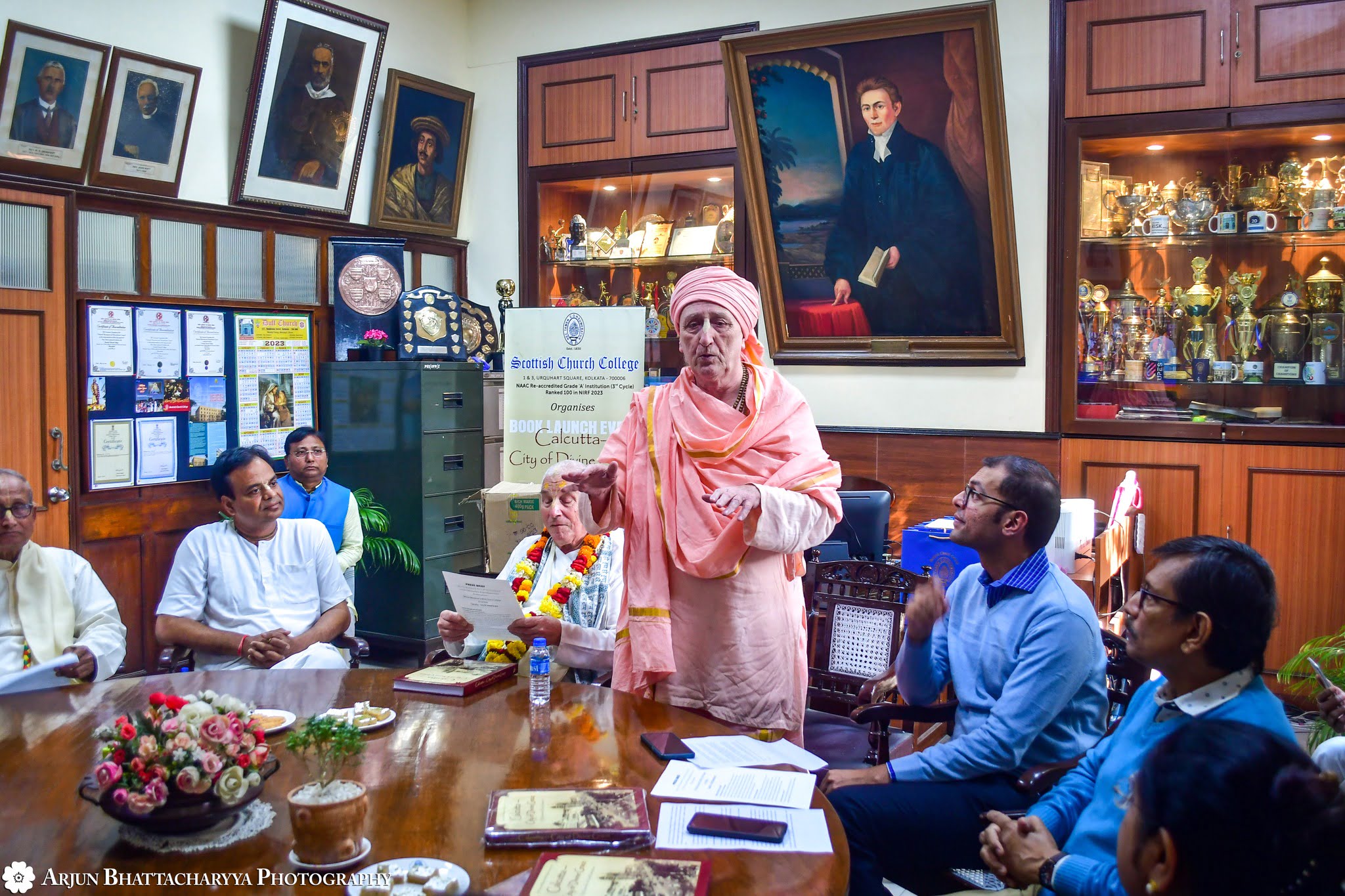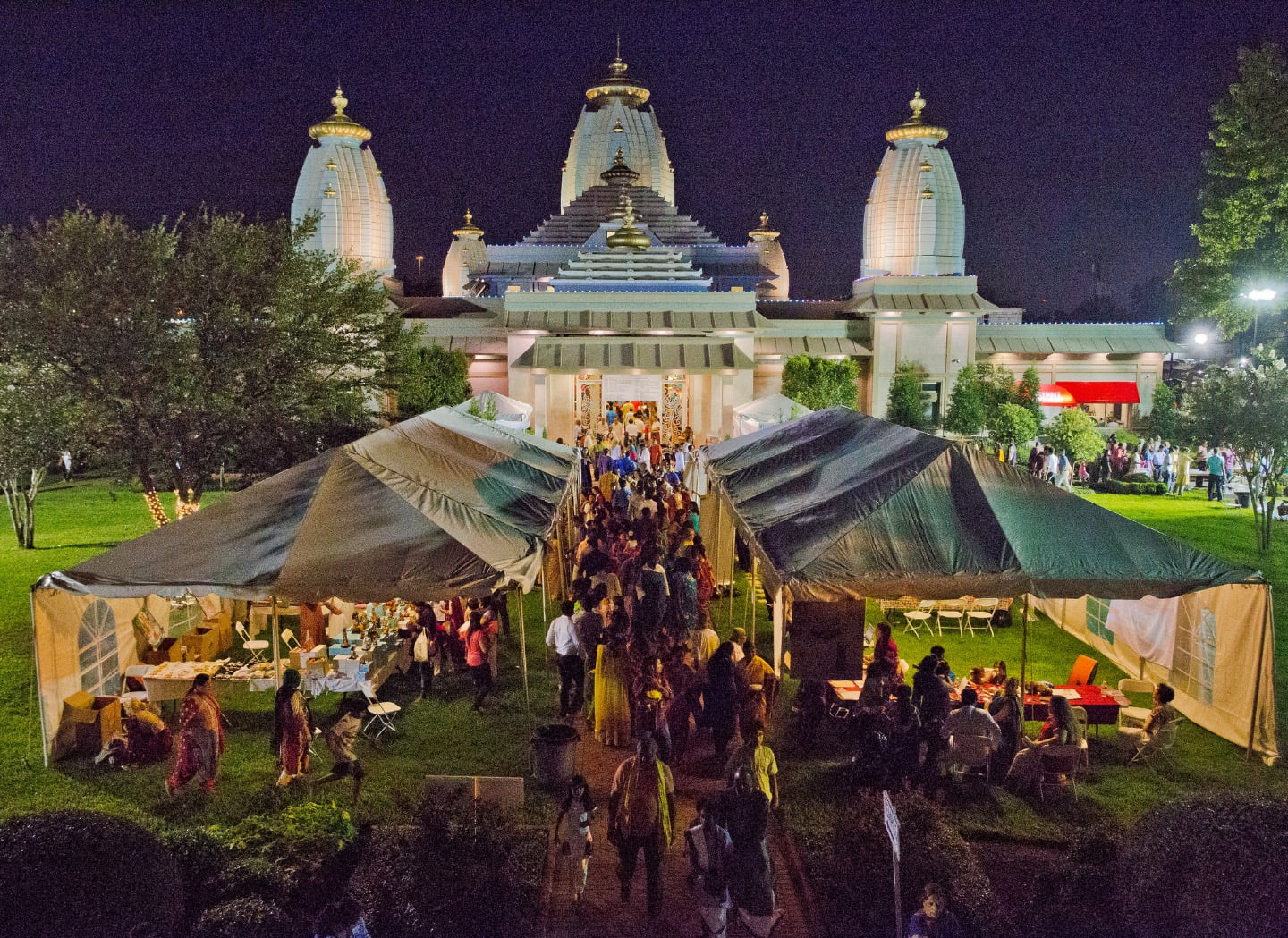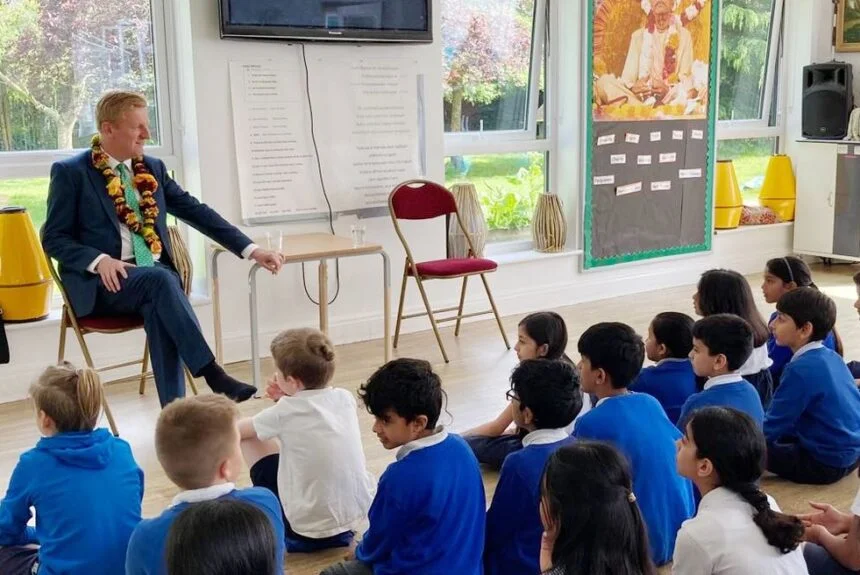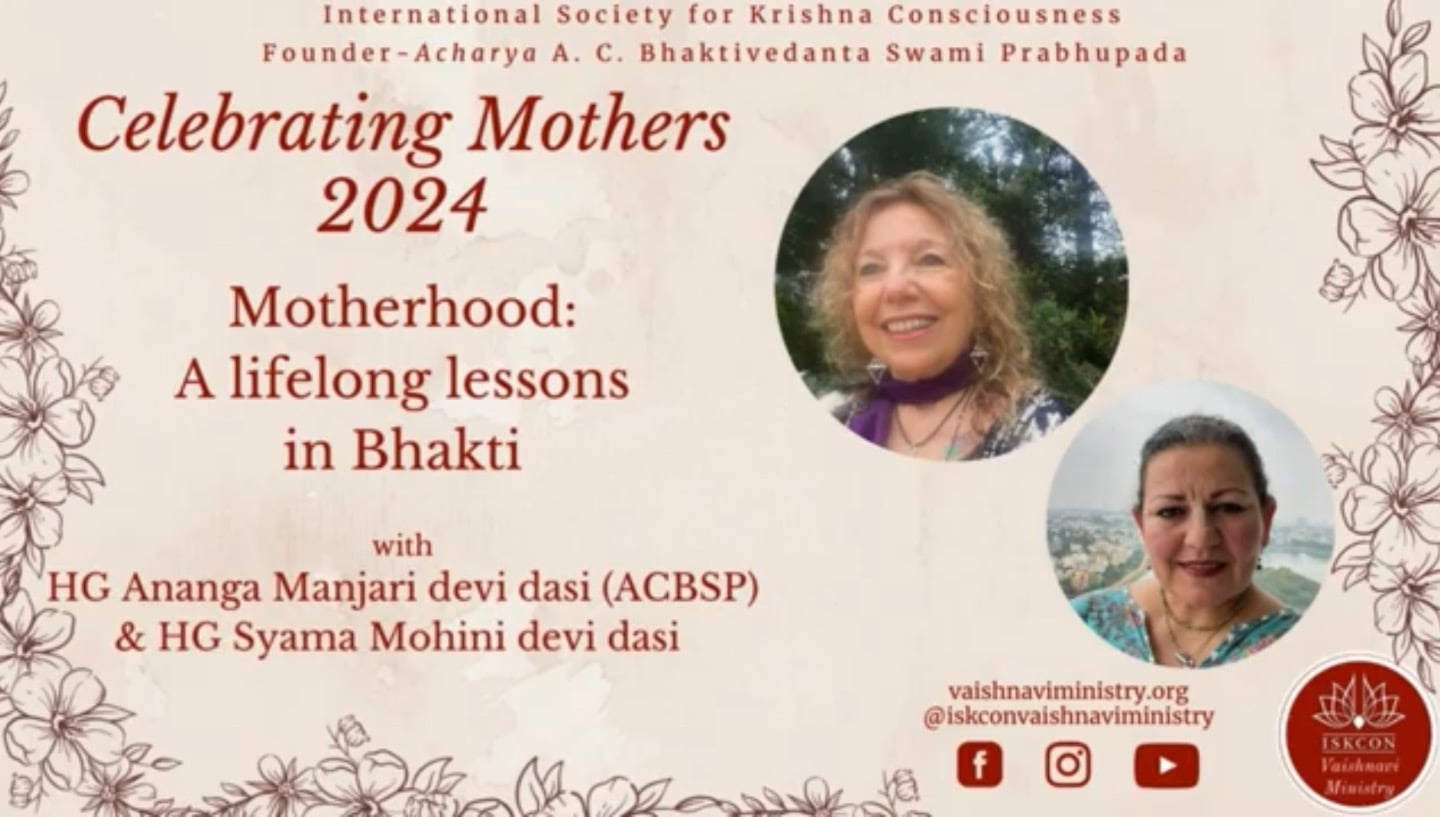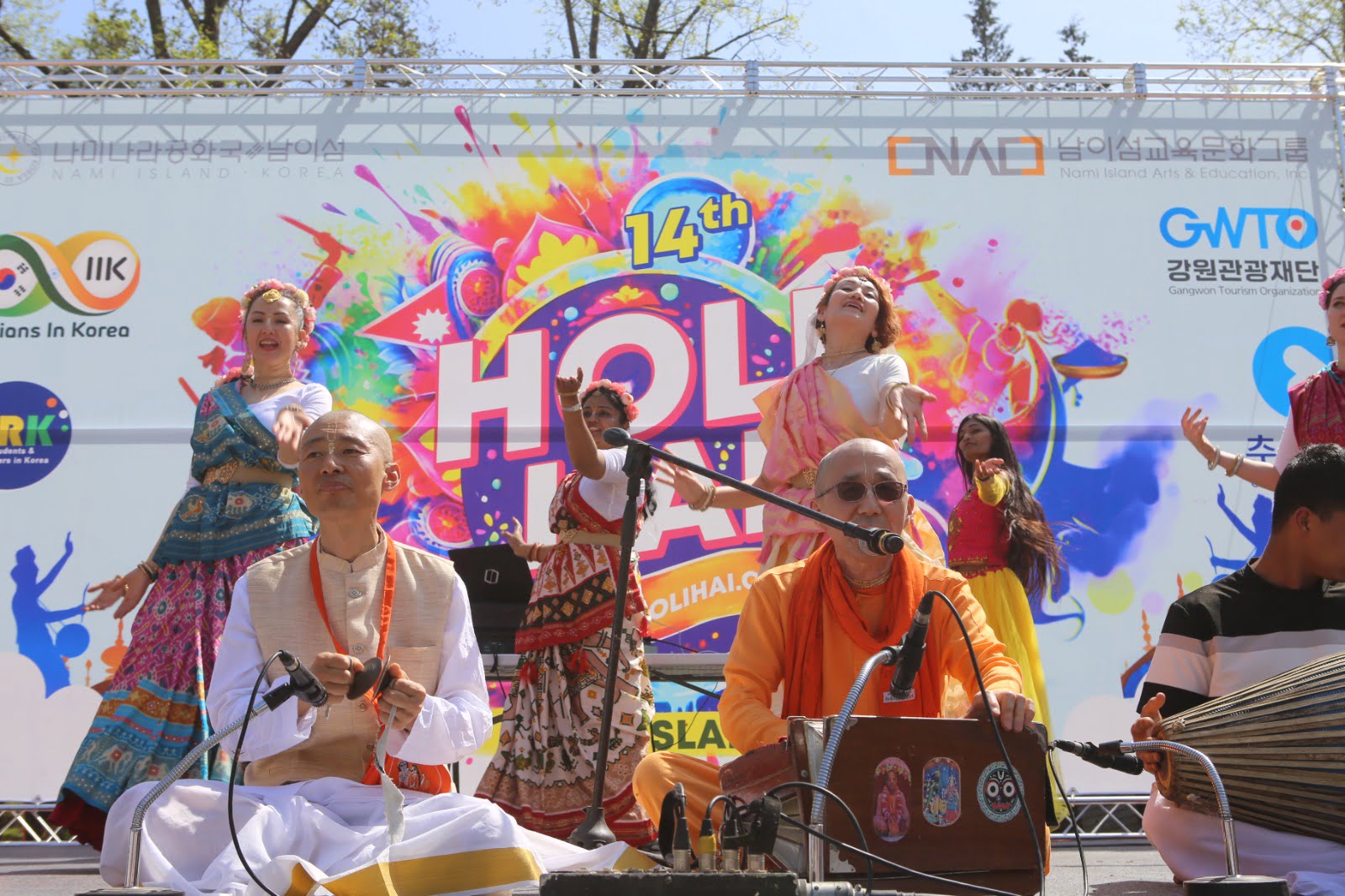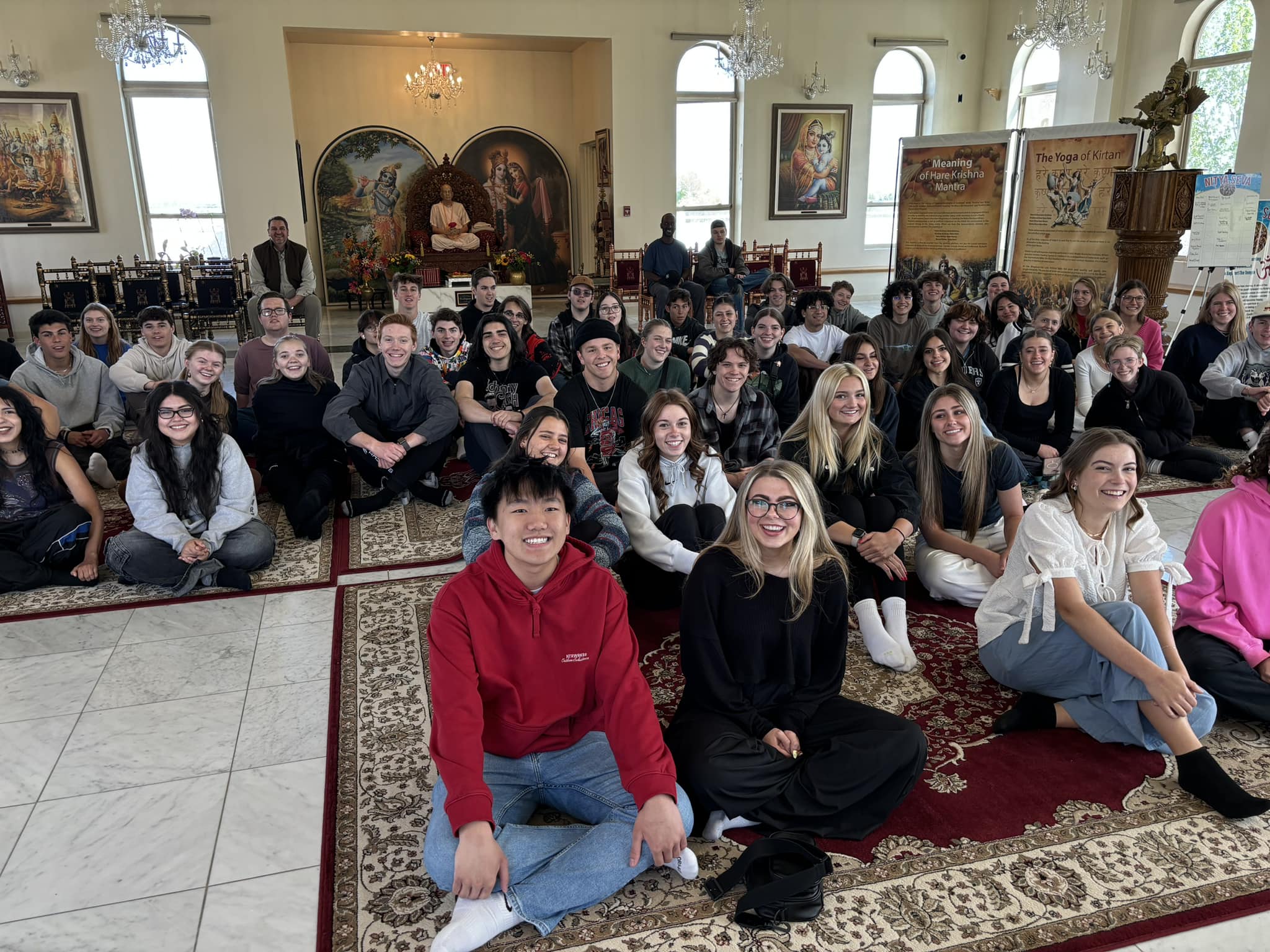The Land of Krishna Celebrates Holi
By Lakshman Dasa | Mar 20, 2010
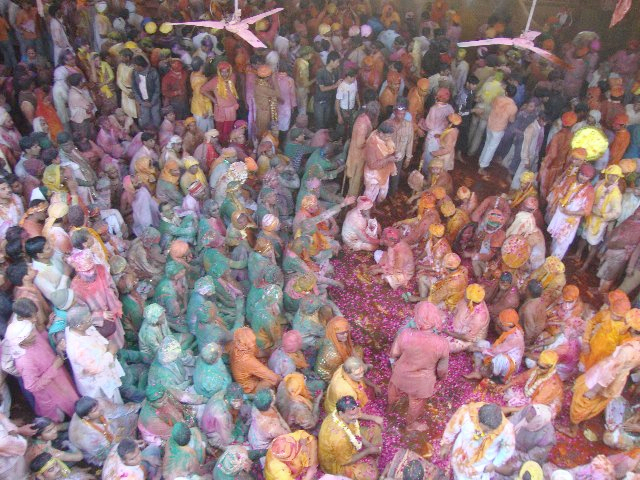
Residents of Vraj, the area in Uttar Pradesh, India, were Lord Krishna is said to have performed many of His pastimes, exhuberantly celebrated Holi this February 28th. Known as the festival of color, this day is close to the heart of every “Vrajavasi” and is one of the most prominent events in the area.
The day began as brahmana priests of Nandagram, where Krishna lived as a child with his father Nanda Maharaja, adorned the Nanda Bhavan temple with beautiful flags. They then glorified the deities of Krishna, his divine brother Balarama, and their parents Nanda and Yashoda by singing Holi songs and showering them in powdered dyes.
Next, accompanied by tumultuous kirtan chanting, they proceeded towards Varsana, where Krishna’s consort Srimati Radharana is said to have grown up.
Wearing colorful turbans in honor of Holi, the Nandagram brahmanas climbed Brahmachal mountain to visit the palace of Radharani’s father Vrishabhanu. There, a group of local Varsana brahmanas welcomed them in the traditional Holi way—with a shower of powdered dye! Both groups then sat facing the altar of Srimati Radharani and chanted Holi songs together, all the while using traditional water-guns called “pichkaris” to spray each other with liquid dye.
Elsewhere in Varsana, on a narrow road called “Latth mar galli,” thousands of married gopi women and more local brahmanas participated in one of the stranger Holi customs—“Latthmar Holi.”
Brandishing bamboo sticks with much relish, the women chase away the men, who protect themselves with shields specially made for the occasion.
This commemorates the the day on which, according to Vaishnava tradition, Lord Krishna visited Radharani’s village and playfully teased her and her friends. Taking offence at this, the women of Varsana chased him away.
A similar custom was observed in Nandagram, where the men of Varsana, known as “gopas,” raided the temple of Nanda Bhavan and attempted to unfurl their victory flag over it while the bamboo-armed women fended them off. Here, the men did not have shields but were well protected by padding, as they were only allowed to retaliate by spraying the women with liquid dye. What’s more, it was certainly within their best interest to make sure they were not caught by the women—for if they were, they were made to dress in a sari and dance, just as the gopis of Varsana once made Krishna do in fun.
Throughout the whole enactment, both men and women sang Holi songs, known as “Hori” and based primarily on exchanges between Radha and Krishna.
While chaotic, the entire celebration of Holi was suffused with a sense of fun as well as devotion—the festival, it is said, originates from the time when, jealous of Radha’s fair complexion, Krishna teased her by painting her face with color. Thus, the people of Mathura and Vridavan associate Holi with the divine love of Radha and Krishna.
If you’re brave enough, why not step out and participate next time you visit India?
Just make sure not to wear your best clothes.





